The Majestic Elephant Seal: A Deep Dive into a Marine Giant
The northern and southern elephant seals are among the most remarkable marine mammals on Earth. These colossal creatures, aptly named for the massive proboscis of the adult male, are masters of the ocean depths and captivating subjects for scientific study and public admiration. This guide explores all aspects of their lives, from evolutionary origins to current conservation status, providing insights for students, animal enthusiasts, and anyone curious about these incredible animals.
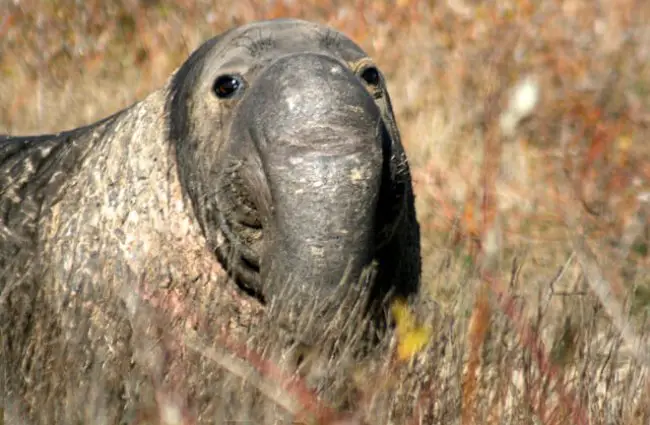
Origins and Evolution
Elephant seals belong to the family Phocidae, commonly known as true seals. Their evolutionary history traces back to the early pinnipeds, believed to have descended from land-dwelling carnivores around 23 million years ago. The two extant species, the northern elephant seal (Mirounga angustirostris) and the southern elephant seal (Mirounga leonina), diverged from a common ancestor. Fossil records indicate that their ancestors were likely more widespread, but today, their populations are largely concentrated in specific breeding grounds.
Habitat and Distribution
Northern elephant seals inhabit the eastern North Pacific Ocean, primarily breeding on the California and Baja California coasts, and occasionally venturing as far north as Alaska. Southern elephant seals have a circumpolar distribution in the Southern Ocean, breeding on subantarctic islands such as South Georgia, Macquarie Island, and the Kerguelen Islands. They are highly migratory, undertaking long journeys in search of food. Their preferred habitats include sandy beaches for breeding and haul-out, and the open ocean for foraging.
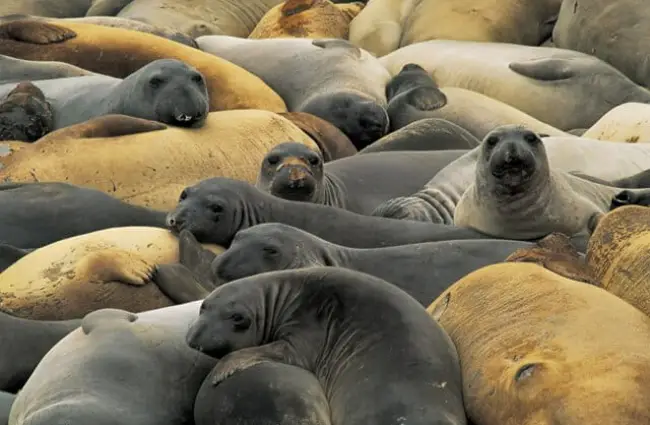
Physical Characteristics
Elephant seals are easily distinguished by their size and unique features. Males are significantly larger than females, with southern elephant seal males being the largest of all pinnipeds, reaching lengths of up to 6 meters (20 feet) and weights exceeding 4,000 kilograms (8,800 pounds). Females typically reach lengths of around 3 meters (10 feet) and weights of 900 kilograms (2,000 pounds). The prominent proboscis of the male, used for amplifying vocalizations during breeding season and establishing dominance, is a defining characteristic. They possess a thick layer of blubber, providing insulation in cold waters and serving as an energy reserve during fasts.
Diet and Foraging Behavior
Elephant seals are opportunistic feeders, preying on a variety of marine organisms. Their diet includes fish, squid, octopus, crustaceans, and even occasionally seabirds. They are deep divers, capable of reaching depths of over 1,500 meters (5,000 feet) and holding their breath for over 100 minutes. This allows them to access food sources unavailable to many other marine mammals. Foraging trips can last for weeks or even months, during which time they rely on their blubber reserves.
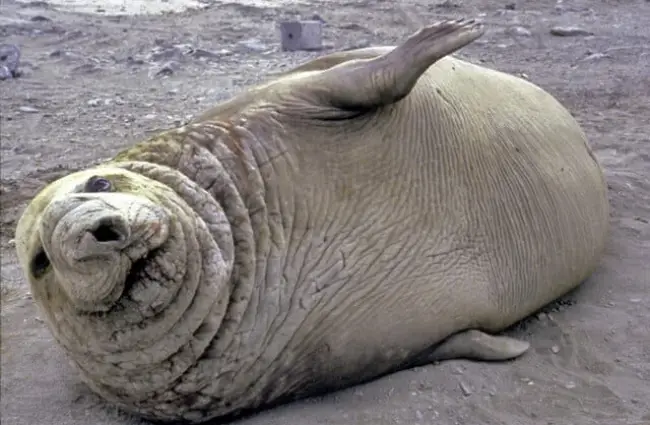
Reproduction and Life Cycle
The breeding season of elephant seals is a dramatic affair, characterized by fierce competition among males for dominance and access to females. Males establish territories on breeding beaches and engage in aggressive battles, often resulting in injuries. Successful males mate with multiple females, forming harems. Females typically give birth to a single pup after a gestation period of around 11 months. Pups are nursed for approximately 4 to 6 weeks, gaining weight rapidly before being weaned. Young elephant seals undergo a period of independent foraging before reaching sexual maturity, around 3 to 5 years of age.

Social Structure and Communication
Outside of the breeding season, elephant seals are generally solitary animals, although they may congregate in haul-out areas. Communication primarily occurs through vocalizations and physical displays. Males use their proboscis to produce loud roaring sounds during breeding season, signaling their dominance and attracting females. Pups communicate with their mothers through distinctive calls, helping them locate each other on crowded beaches.
Ecological Role and Interactions
Elephant seals play an important role in the marine ecosystem. They are top predators, helping to regulate populations of their prey species. They also serve as prey for killer whales and sharks. Their foraging activities can influence nutrient cycling in the ocean, benefiting other marine organisms. Additionally, the nutrients they bring from the deep ocean to breeding beaches contribute to the productivity of coastal ecosystems.
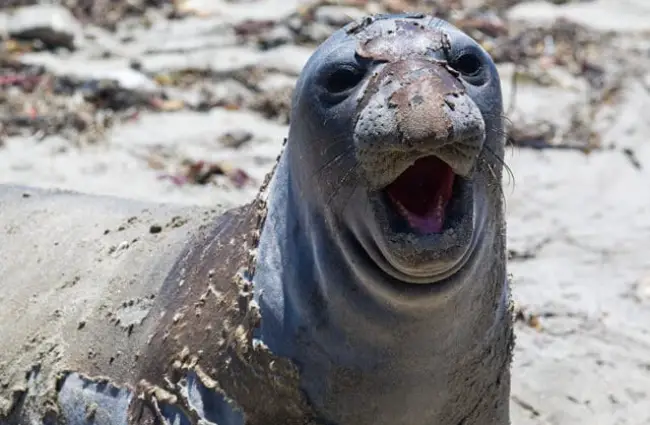
Conservation Status and Threats
Both species of elephant seals faced severe declines in the 19th and early 20th centuries due to commercial hunting for their oil-rich blubber. However, thanks to conservation efforts, populations have rebounded significantly. The northern elephant seal, in particular, has made a remarkable recovery from a low of fewer than 100 individuals in the 1920s. Despite this success, they still face ongoing threats, including entanglement in fishing gear, habitat loss, climate change, and disease outbreaks. Continued monitoring and conservation efforts are essential to ensure their long-term survival.
Elephant Seals and Humans
Historically, elephant seals were hunted extensively for their oil, which was used for lighting and lubrication. Today, they are protected by law in most countries. However, they still occasionally interact with humans, sometimes causing damage to fishing gear or boats. It is important to maintain a safe distance from elephant seals and avoid disturbing them, especially during breeding season.
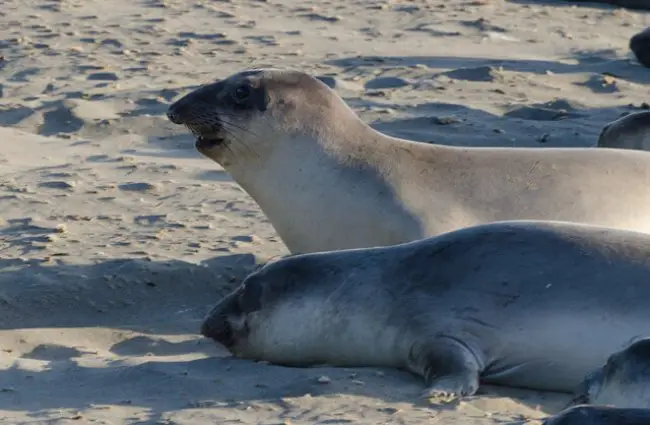
Finding Elephant Seals in the Wild
For those interested in observing elephant seals in their natural habitat, several locations offer excellent viewing opportunities. In California, Año Nuevo State Park and Point Piedras Blancas are renowned breeding colonies. In the Southern Ocean, South Georgia Island is a particularly spectacular location, hosting a massive breeding population of southern elephant seals. When observing these animals, remember to maintain a respectful distance and avoid disturbing their behavior.
Caring for Elephant Seals in Captivity
While not commonly found in zoos or aquariums due to their large size and complex needs, some facilities do house elephant seals for research or rehabilitation purposes. Care requires extensive space, a large and well-maintained pool that mimics the ocean environment, a diet consisting of fish and squid, and regular veterinary care. Enrichment activities are essential to stimulate their natural behaviors, such as providing opportunities for diving and foraging. Avoiding overcrowding and minimizing human interaction are crucial for their well-being.
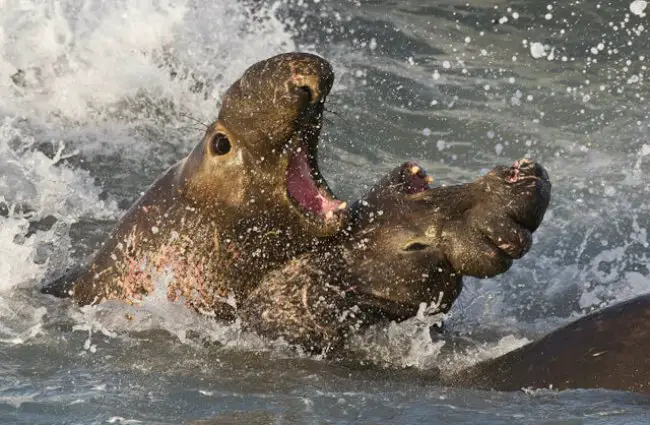
Fascinating Facts
- Elephant seals can hold their breath for over 100 minutes, longer than any other marine mammal.
- Southern elephant seal males can weigh up to 4,000 kilograms (8,800 pounds), making them the largest pinnipeds.
- Elephant seals migrate thousands of miles in search of food.
- The proboscis of the male elephant seal amplifies vocalizations and is used in dominance displays.
- Elephant seals can dive to depths of over 1,500 meters (5,000 feet).
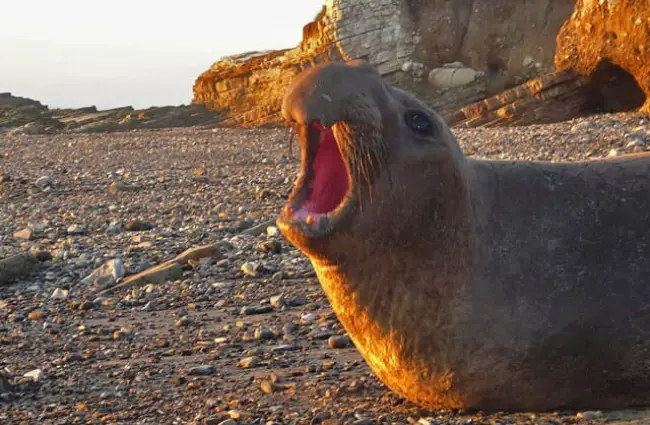
Elephant seals are truly remarkable creatures, embodying the power and resilience of marine life. Their fascinating biology, unique behaviors, and conservation story make them a compelling subject for scientific study and public admiration. By understanding and appreciating these magnificent animals, we can contribute to their continued survival for generations to come.

![Red Angus Closeup of a beautiful Red Angus cowPhoto by: U.S. Department of Agriculture [pubic domain]https://creativecommons.org/licenses/by/2.0/](https://animals.net/wp-content/uploads/2020/03/Red-Angus-4-238x178.jpg)




![Red Angus Closeup of a beautiful Red Angus cowPhoto by: U.S. Department of Agriculture [pubic domain]https://creativecommons.org/licenses/by/2.0/](https://animals.net/wp-content/uploads/2020/03/Red-Angus-4-100x75.jpg)

